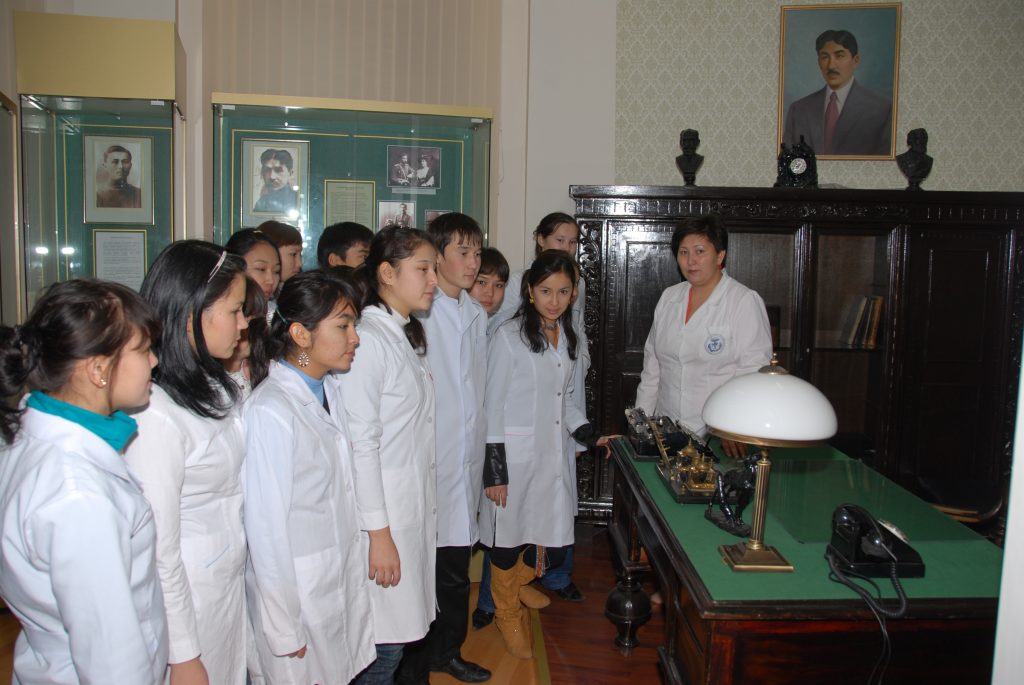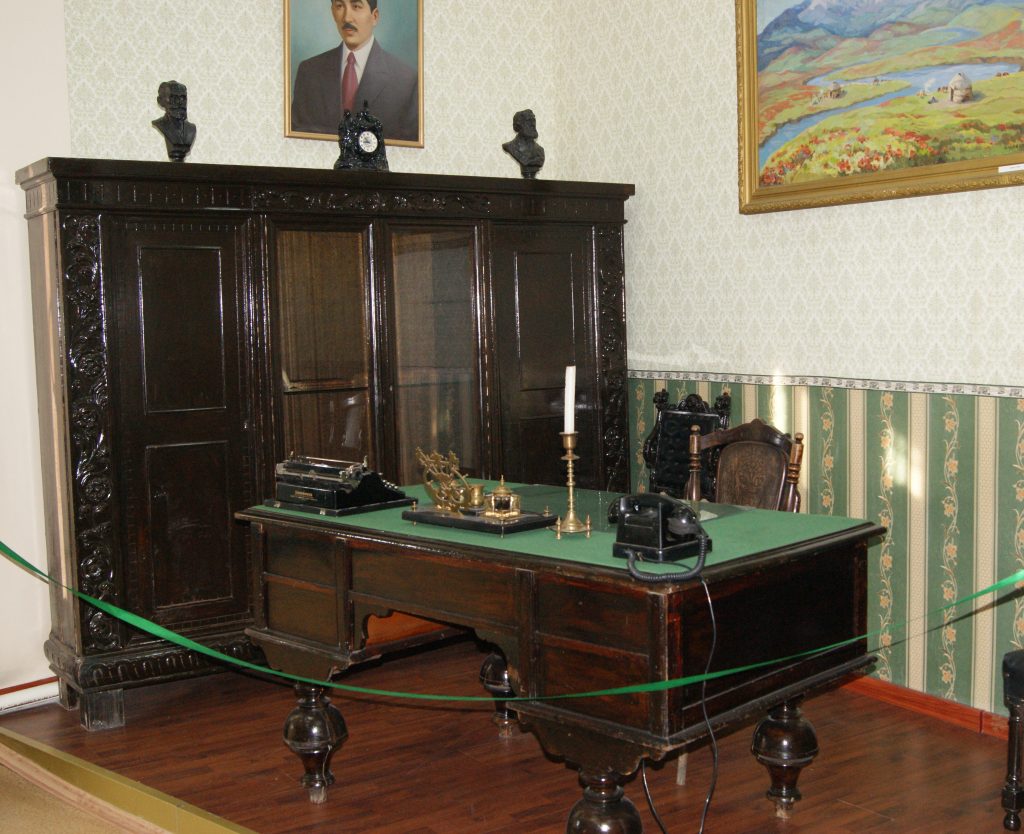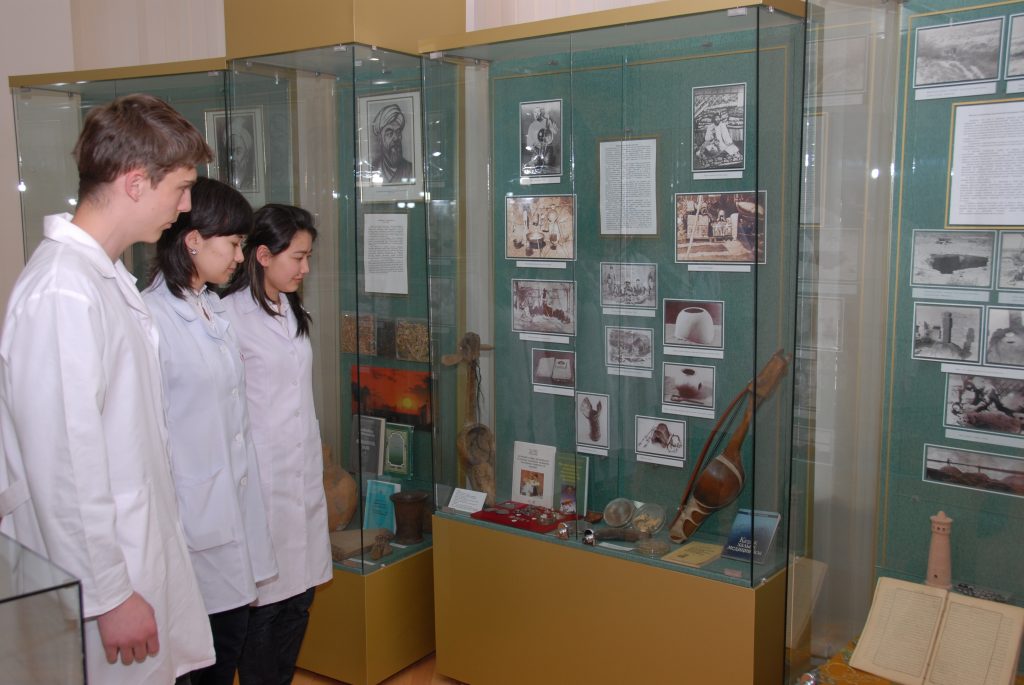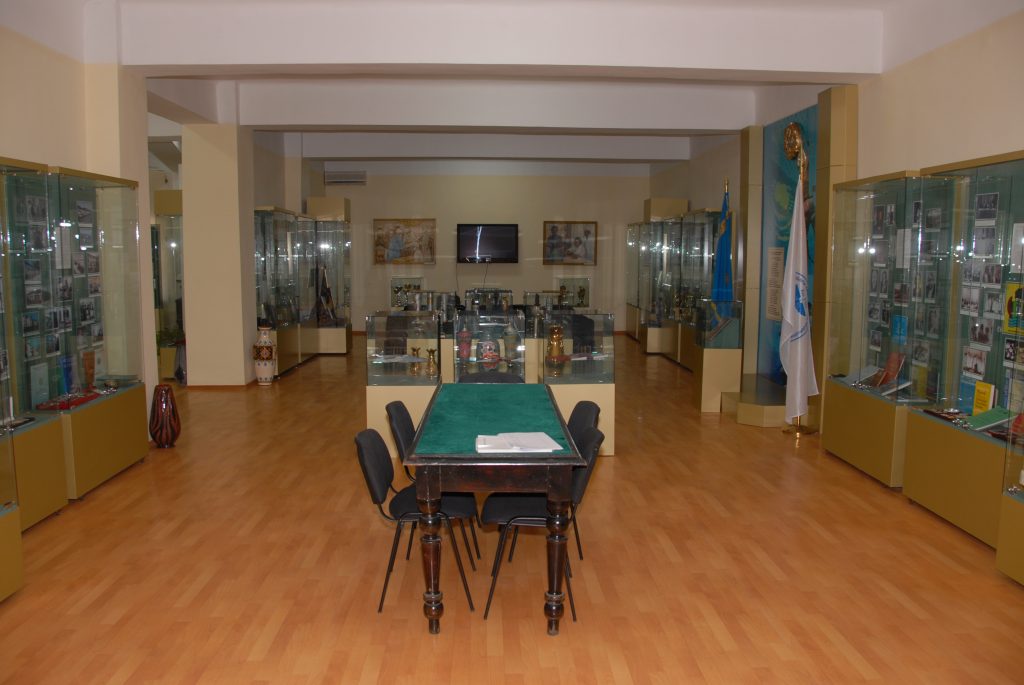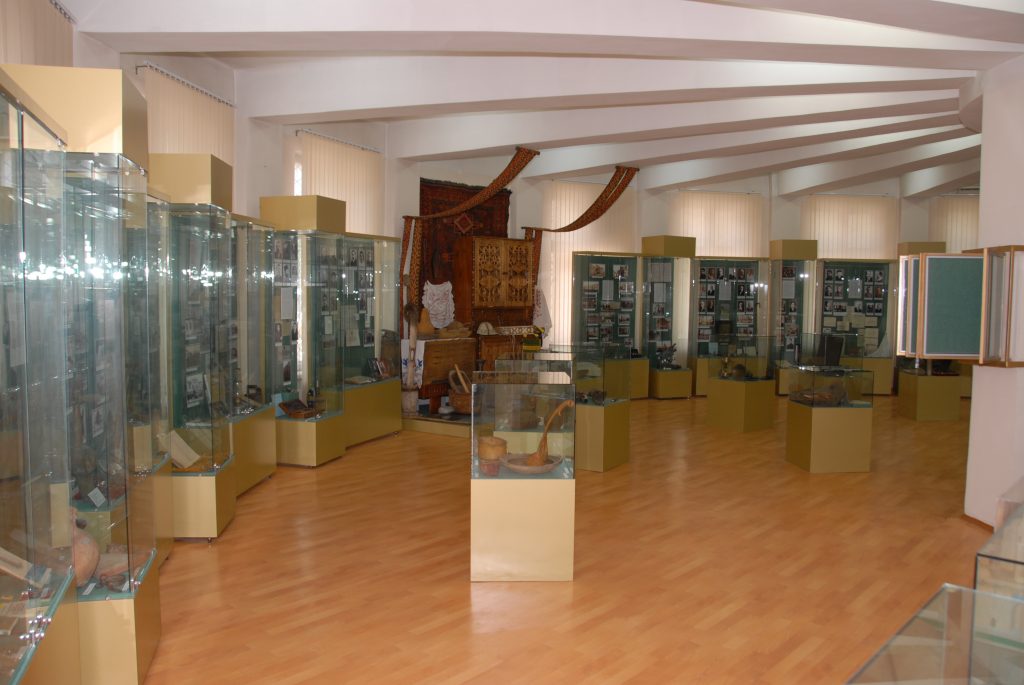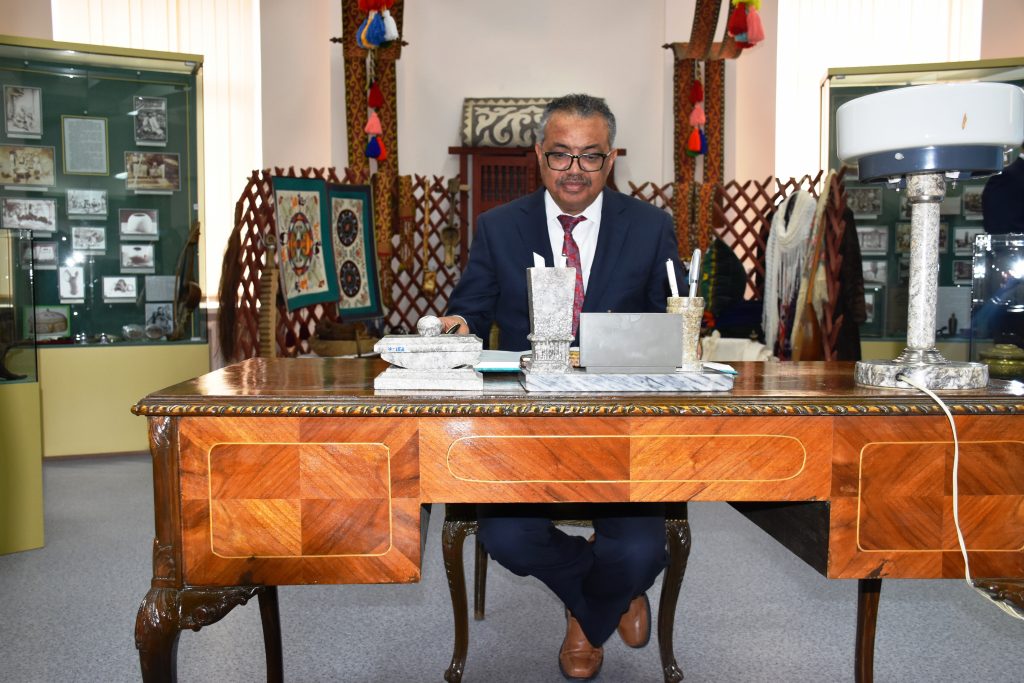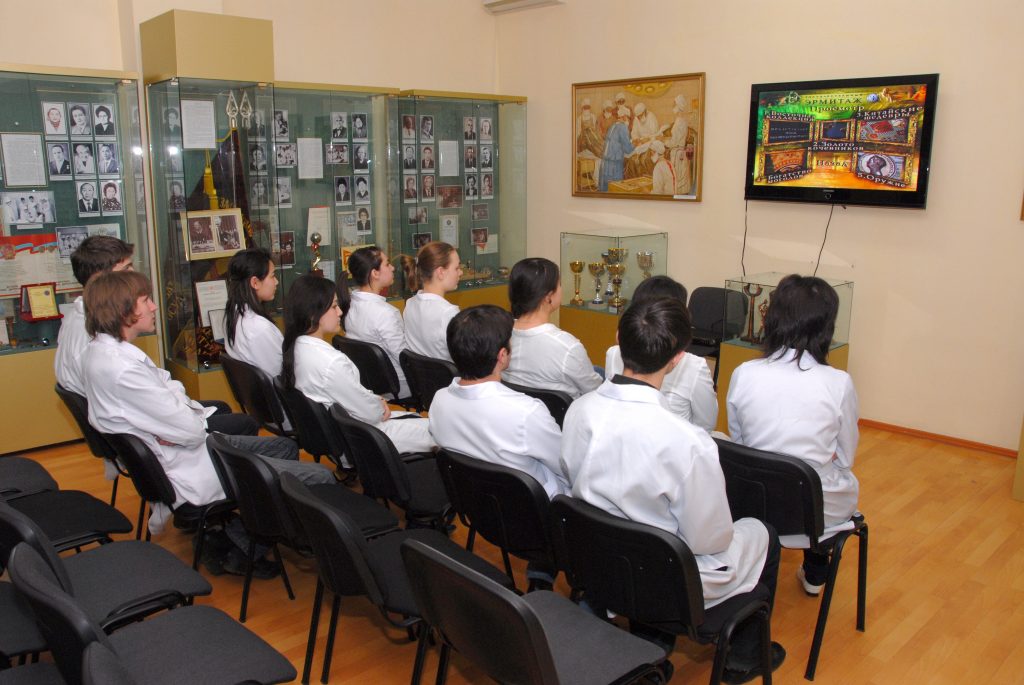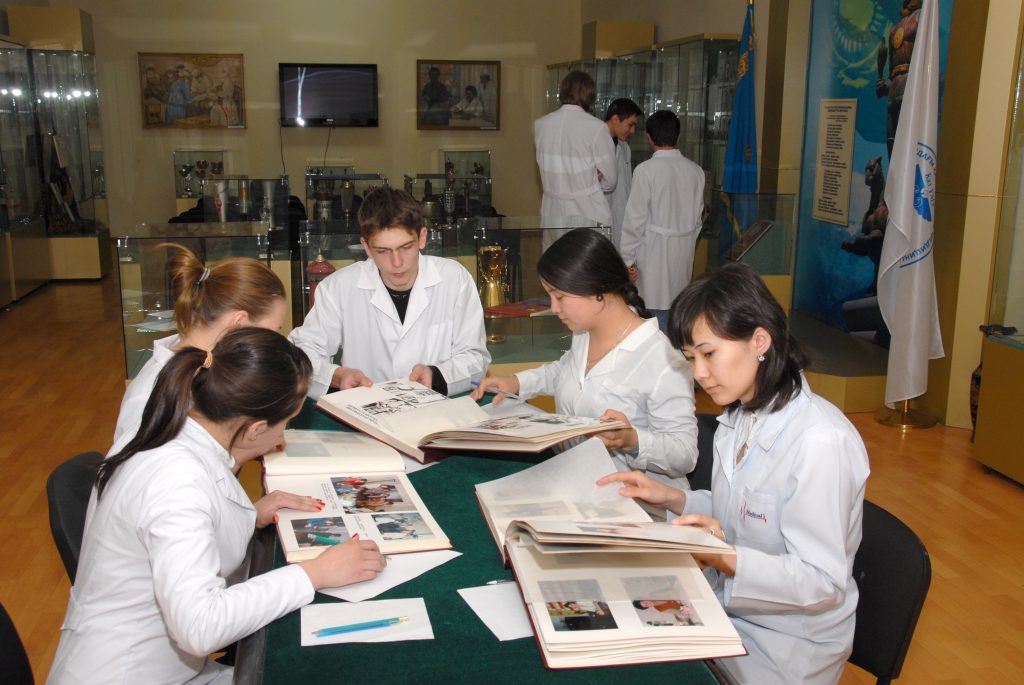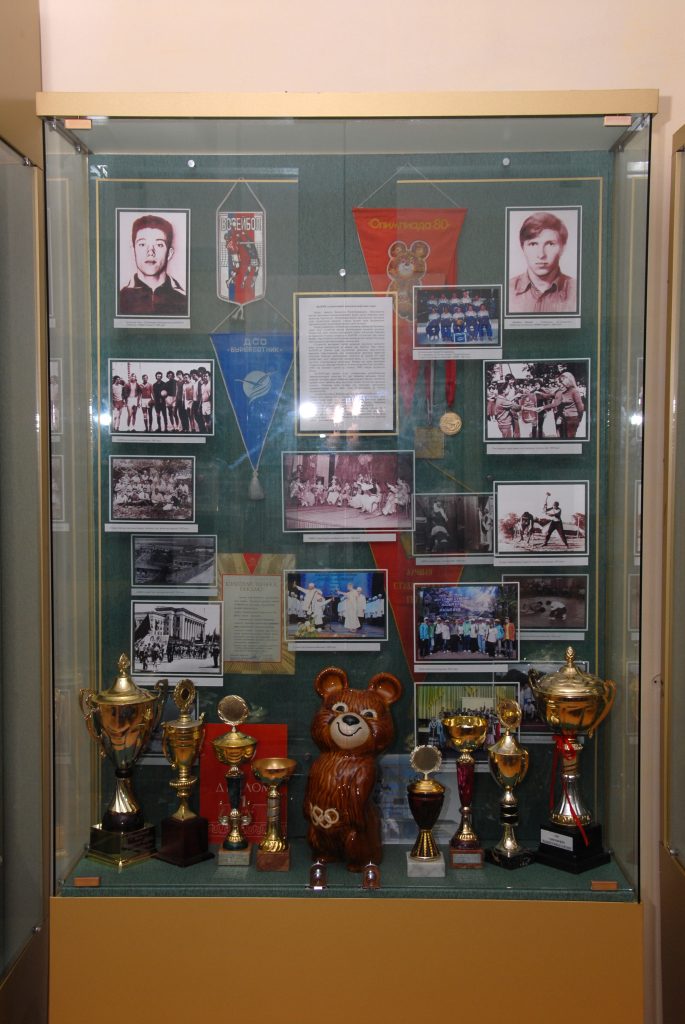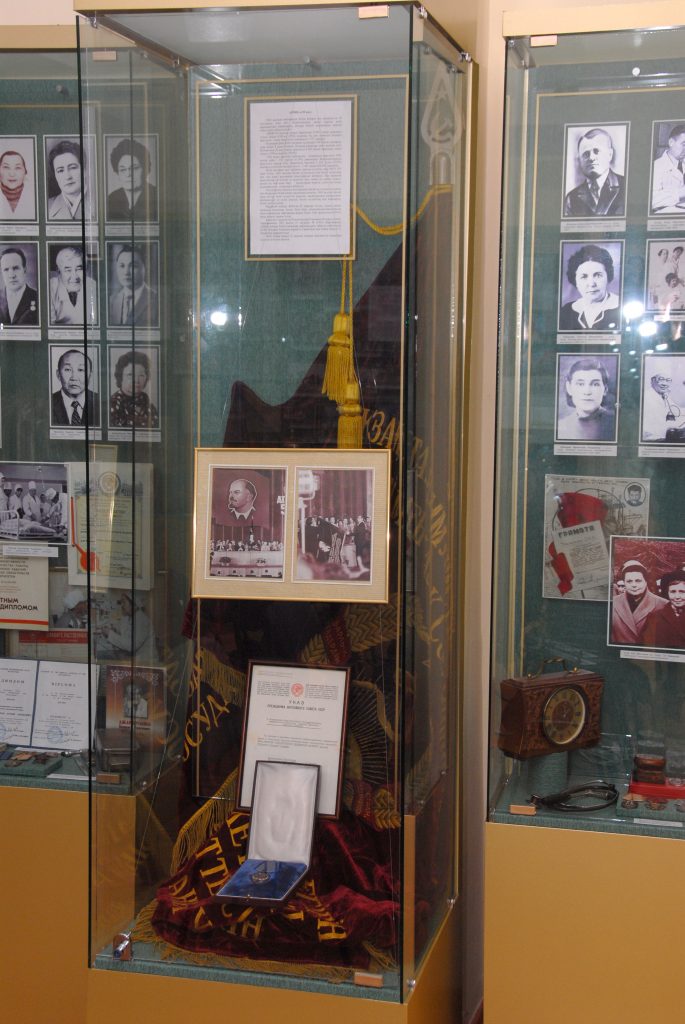Museum of S.D. Asfendiyarov KazNMU History
The History Museum of S.D. Asfendiyarov Kazakh National Medical University (KazNMU) was inaugurated on May 22, 2001. This significant event marked an important step in preserving and promoting the rich history of one of the country’s leading medical universities.
Currently, the History Museum of KazNMU functions as an independent structural unit of the university, carrying out key educational and cultural missions. The primary objective of the museum is to deepen students’ knowledge about the university’s history, the development of medicine in Kazakhstan, and global achievements in the healthcare field.
The museum actively engages in educational activities among students, enhancing their understanding of the importance of medical science and its historical development. Additionally, it conducts career guidance for schoolchildren, fostering their interest in medicine and encouraging them to pursue careers in this field. As part of these initiatives, the museum organizes excursions, lectures, and meetings that help younger generations better comprehend the role of medicine in society.
Moreover, the museum provides consultations on the history of the university and Kazakhstan’s healthcare system to students, faculty members, and researchers. This contributes to the deepening of research work, the exchange of knowledge and ideas, and the advancement of KazNMU’s scientific and educational foundation.
The museum plays a crucial role in shaping professional and civic values among students, serving as an invaluable element in the education and training of future medical specialists.
Museum Exhibition
The History Museum of KazNMU is located in three exhibition halls with a total area of approximately 280 square meters. Each section of the museum is designed to provide visitors with a deeper insight into the unique history of the university and Kazakhstan’s healthcare system.
The thematic content of the museum’s exhibition covers the entire developmental trajectory of the university from its founding in 1930 to the present day. The exhibits chronologically highlight key organizational milestones in the establishment of both Kazakhstan’s healthcare system and the university itself, which has become a pivotal center for training highly qualified medical professionals.
Special attention is given to the contributions of the university’s pioneering educators and graduates, whose achievements in medicine and science have played a vital role in shaping the national healthcare system. These figures are the founders of KazNMU’s traditions, and their work has become a significant milestone in the educational and medical sectors of the country.
The museum exhibition fosters a sense of pride among students for their university and instills respect for the pedagogical traditions and values upheld by generations of faculty members and students. Each section of the museum helps young people better understand the significance of their future profession and the high ethical principles, such as humanism and responsibility, that form the foundation of medical practice.
A visit to the museum is not only an educational experience but also a formative one for medical students, promoting patriotism and civic maturity. Interacting with the history of the university and the medical field helps future doctors recognize the importance of their profession to society and inspires them to strive for excellence in medicine.
The exhibition covers key events and milestones in the university’s and Kazakhstan’s medical history. The museum features numerous thematic sections, each highlighting significant moments in the institution’s history and its contributions to the advancement of medical science and education in the country.
Main Sections of the Museum:
1. Traditional and Religious-Mystical Medicine of the Kazakh People. This section introduces visitors to the traditional healing practices of the Kazakh people, including folk rituals, the use of medicinal herbs, and religious practices that influenced healthcare before the advent of modern medical knowledge.
2. The First Rectors and Educational Bases of the University in the 1930s. This section presents the history of KazNMU’s first rectors and describes the university’s educational facilities in the 1930s when it was just beginning its operations. It highlights the learning conditions, challenges of the time, and the contributions of early leaders to the institution’s development.
3. The First Faculty Members of KazNMU (1931–1938). This section is dedicated to the university’s first faculty members, their impact on the educational process, the establishment of medical education, and the training of Kazakhstan’s first healthcare professionals.
4. The First Graduating Classes of Doctors in Kazakhstan: 1936, 1937, 1938, 1939, 1940. This section showcases the early graduates of KazGMI in the late 1930s, when the institute began to prepare qualified specialists for the needs of the national health system.
5. KazNMU during the Great Patriotic War: Heroes of the Soviet Union – Manshuk Mametova and Vladimir Ivanilov. This section covers the difficult years of the Great Patriotic War, when the KazGMI continued its work, with a particular focus on war heroes and KazNMU graduates Manshuk Mametova and Vladimir Ivanilov, whose exploits became part of the history not only of the school, but also of the whole country.
6. Outstanding Medical Scientists – Alumni of KazNMU (Academicians). This section highlights the university’s distinguished academic alumni whose research and scientific achievements have significantly influenced medical progress in Kazakhstan and beyond.
7. Heroes of Socialist Labor – Alumni of KazNMU. This section is dedicated to KazNMU graduates who who became Heroes of Socialist Labor for outstanding achievements in medicine, science and healthcare.
8. Student Life at the University: Construction Brigades and Artistic Activities. This section considers the the active public life of KazNMU students, including participation in construction teams and development of artistic amateur activities. It emphasizes the importance of developing a civic attitude among students and participating in socially useful work.
9. Student Awards: Red Banners for Excellence in Virgin Lands Development and Construction Brigades. This section showcases student achievements during the Virgin Lands Campaign and construction brigade work, featuring awards, commendations, and certificates recognizing contributions to agricultural labor and rural healthcare education.
10. Sports Achievements of KazNMU Students: Olympic Champions. This section celebrates the athletic accomplishments of KazNMU students, including victories at the Olympic Games and other major sports competitions. Visitors can see trophies, certificates, and other awards recognizing these achievements.
11. History of All Faculties from the University’s Founding to the Present. This section chronicles the history and evolution of KazNMU’s faculties from its inception to today, reflecting key developments and milestones in each faculty’s progress.
12. History of All Departments (Materials Presented in Albums). This section provides insights into the history of the university’s departments, their scientific and educational accomplishments. The materials are presented in albums, showcasing significant events and achievements of each department, as well as the contributions of faculty and students.
These sections allow visitors to gain a deeper understanding of KazNMU’s history, its role in shaping medical education and healthcare in Kazakhstan, and honor those who have made significant contributions to the field.
A special pride of the Museum is its unique exhibition of handwritten letters from alumni sent from the front lines during World War II. These letters hold immense historical and educational value, reflecting not only personal experiences but also the spirit of the time. They serve as invaluable testimonies of the enduring connection between the university’s graduates and their alma mater during wartime.
Additionally, the museum keeps authentic items from faculty offices dating back to 1931, as well as household objects from that era, allowing visitors to immerse themselves in the early years of medical education in Kazakhstan. Among the museum’s unique exhibits are rare negatives and photographs of KazNMU’s original buildings, faculty members, and students from the 1930s, offering a glimpse into the university’s formative years.
The KazNMU History Museum also maintains a collection of documentary films from the 1930s to the 1950s. These materials have been used to create documentaries on Kazakhstan’s healthcare history and the university itself, serving as vital historical sources for researchers and students.
The museum resources are actively used by students in their studies. KazNMU students prepare abstracts and reports, using historical sources from the exhibition on the curatorial hours and practical classes. Students also actively participate in the work of the museum, helping to collect new historical documents and materials, as well as creating electronic archives with the history of the university.
The museum is actively working on collecting memoirs of veterans of the Great Patriotic War and labor. These valuable memories are an important source of information about the contributions of people to the development of medicine and society in general in different historical eras.
